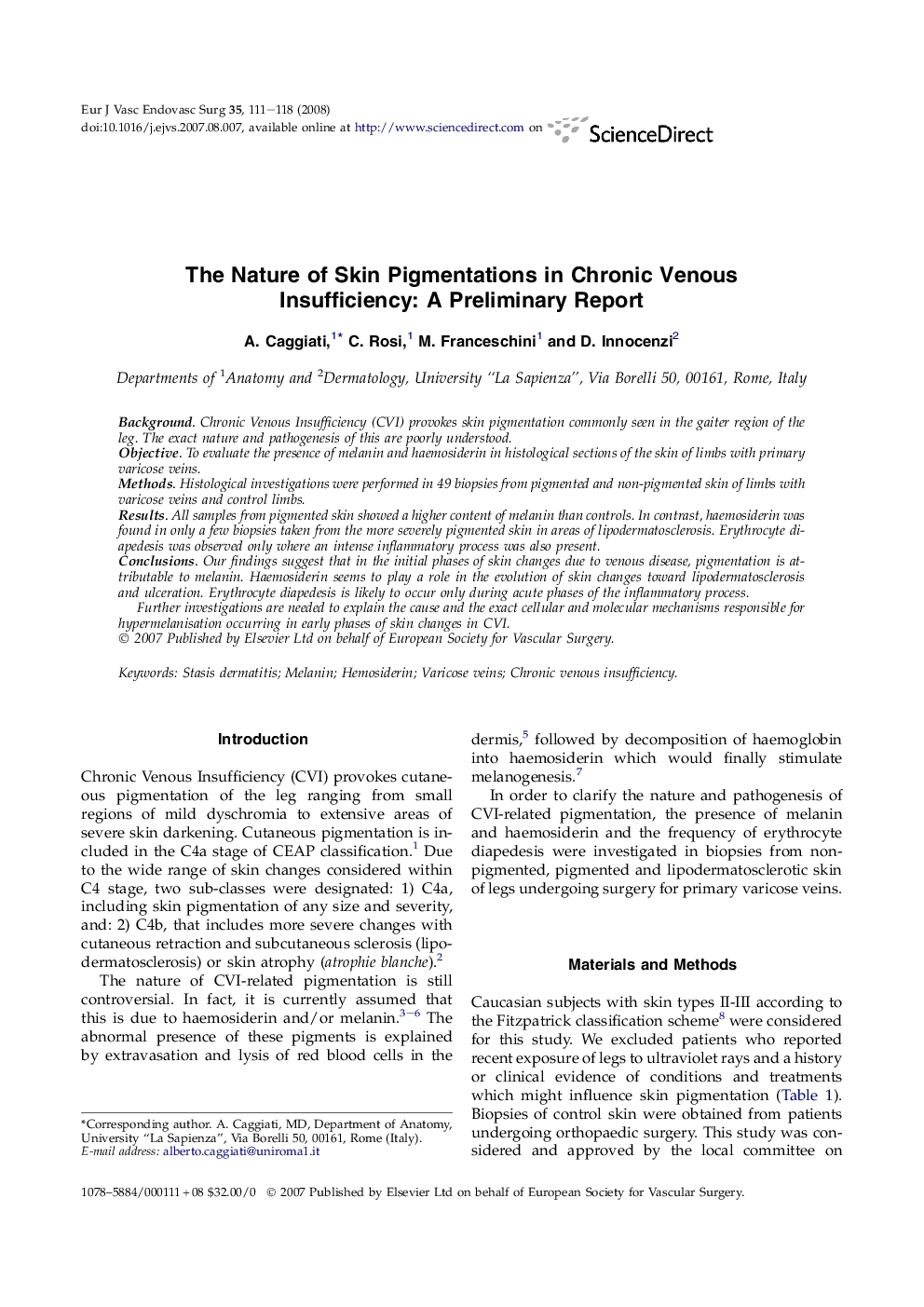| Article ID | Journal | Published Year | Pages | File Type |
|---|---|---|---|---|
| 2915281 | European Journal of Vascular and Endovascular Surgery | 2008 | 8 Pages |
BackgroundChronic Venous Insufficiency (CVI) provokes skin pigmentation commonly seen in the gaiter region of the leg. The exact nature and pathogenesis of this are poorly understood.ObjectiveTo evaluate the presence of melanin and haemosiderin in histological sections of the skin of limbs with primary varicose veins.MethodsHistological investigations were performed in 49 biopsies from pigmented and non-pigmented skin of limbs with varicose veins and control limbs.ResultsAll samples from pigmented skin showed a higher content of melanin than controls. In contrast, haemosiderin was found in only a few biopsies taken from the more severely pigmented skin in areas of lipodermatosclerosis. Erythrocyte diapedesis was observed only where an intense inflammatory process was also present.ConclusionsOur findings suggest that in the initial phases of skin changes due to venous disease, pigmentation is attributable to melanin. Haemosiderin seems to play a role in the evolution of skin changes toward lipodermatosclerosis and ulceration. Erythrocyte diapedesis is likely to occur only during acute phases of the inflammatory process.Further investigations are needed to explain the cause and the exact cellular and molecular mechanisms responsible for hypermelanisation occurring in early phases of skin changes in CVI.
